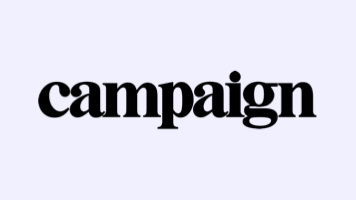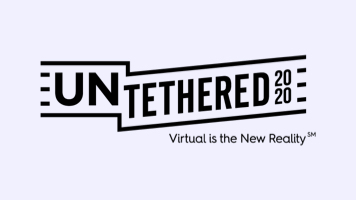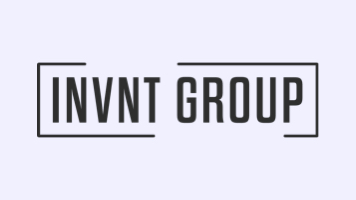This feature explores how our global INVNT creative team leverages Artificial Intelligence (AI) to unlock new frontiers of storytelling and experiences.
By Matt Flachsenhaar – Executive Creative Director, INVNT

Prompts: The Rectangular object sits light on a dark wall, in the style of twisted futurism, rendered in cinema4d, made of glass, album, folio and fan formats, calming symmetry, polaroidcore frozen movement — ar 16:9 — s 750
Artificial Intelligence (AI) is rapidly removing barriers to human creative potential and redefining the brand storytelling space in the process.
Much like the launch of the World Wide Web (all the way to Web3 and the metaverse), AI is transforming the ways we live, work, connect, and create. The technology will undoubtedly impact nearly every profession on the planet and is currently reshaping how creatives approach their work in the experiential industry.
At INVNT, the Live Brand Storytelling agency, the fusion of creativity and technology is a marriage that often leads to our best work. For our creative team, AI is the newest tool in the stack, encouraging creative exploration and fresh perspectives:
“In the beginning, my experience using AI was very playful, testing the limits of what a machine could do. My first ever image generation prompt was “a medieval pizza on a plane.” Because of this initial lightheartedness, I always thought of AI/MidJourney as a discovery tool or trusty sidekick rather than the arch enemy to my job security. For me, tools like MidJourney for example, are efficient for jumpstarting or enhancing the task at hand – never to drive or replace a crucial piece of my design process – which I’ve proudly developed and calibrated over years of work. These powerful tools have helped me refine artistic codes and visual language across projects, empowering me to accomplish more in less time while elevating the quality of our work.” Dana Lipshutz, Graphic Designer, INVNT
Advancing Human Excellence
There is a valid sense of caution surrounding the adoption of AI across industries. Change is scary, after all. Sectors spanning finance, law, medicine, entertainment, creativity, and beyond are swiftly evaluating how and where AI can deliver the greatest efficiency, and when it might need to be reined in.
“AI has instilled a sense of fear in many creative professionals: Will I be out of a job in the next few years? Beyond using AI as a tool in some of my day-to-day workflow, I leverage it tactically; it allows me to manipulate images in new ways or quickly expand on a concept I’ve already been building. To me, it is an enhancement, not a replacement: augmenting a designer’s talent, experience, and vision. In the same way the typewriter revolutionized the art of writing, AI will amplify the voices of Creative Designers, Writers, and Thinkers, expanding creative skillsets and introducing new portals of opportunity.” Frank Kleinsorge, Senior Graphic Designer, INVNT
When music recording emerged, there was a fear it would render singers jobless. Critics argued against the ‘robotic’ invention, arguing it would upend the live music industry. However, music recording didn’t replace singers but instead amplified their artistry, making live performances even more extraordinary. That’s where AI will benefit creatives – by amplifying the creative expressions we are already generating.
AI’s potential impact is underscored in the historic powerhouse partnership of Disney and Pixar, which fused Disney’s artful storytelling and Pixar’s cutting-edge technology.

In 1979, filmmaker George Lucas (Lucasfilm) set out to develop state-of-the-art computer technology for the film industry, through his ‘Computer Division’ team. In 1982, the team of technologists and creatives successfully completed “The Genesis Effect” sequence for Star Trek II: The Wrath of Khan, which shows a time lapse of an initially lifeless planet quickly transformed by lush vegetation. It was the first completely computer animated sequence in a feature film. In 1986, Steve Jobs purchased the Computer Division, establishing its 40 employees as the animation studio, Pixar.
Later, Disney and Pixar partnered on the Computer Animation Production System (CAPS), a project that transformed the production of traditional animated films. The teams blended time-honored storytelling with next generation animation, leading to game-changing results including the birth of new creative modalities in film, growth of the entertainment industry, and culture-shaping storytelling that continues to inspire people of all generations.
A comparable revolution is unfolding within creative teams, which, like the Disney-Pixar duo, are evolving to become more efficient while widening their scale.
Additionally, the quality of AI creative output depends on the individual’s vision and aesthetic taste. Think of PowerPoint presentations. A designer can create much more beautiful work than the layman, even though each has access to the same tools.
The Creative Renaissance
Crafting awe-inspiring design will always require awe-inspiring creative minds. As with the Disney-Pixar partnership, AI serves as an aid and amplifier of creative prowess and human excellence.
“AI lets creatives be the conductor more than ever, particularly in the initial process of creating. For me, it has encouraged new, non-linear, ways of working – where I’m strategically tuning and re-prompting, to get the most dynamic results, since the machine learning’s interpretations are note always accurate. AI makes thoughts a leading driver of creativity – if you can imagine it, you can create it – but only if you have the vision and the mastery of numerous programs and tools, and the knowledge of how to work across them to get the result you can see in your mind. As AI continues to evolve, its integration into our creative workflows has unlocked unprecedented levels of efficiency, insight, deep collaboration, and innovation. With AI as an ally, we can remain nimbly creative.” Gustav Hallen, Experiential Art Director, INVNT
Reimagining Reality
Intriguingly, AI (and all things Web3) allows for the construction of fantastical digital worlds with unrealistic elements, like floating homes in space or whimsical retail stores in the desert. The more of these worlds we consume, the more our expectations for the physical world will also shift. Our increasing familiarity with these unreal digital worlds will lead to a renewed freedom and experimentation when it comes to the design of physical worlds, especially those that are meant to entertain, captivate, and engage live, in-person audiences.
Ultimately, the essence of creativity lies in conveying empathic, relatable, human concepts. Who better than – a human – to lead those efforts? However, AI offers us the means to develop these ideas faster, and often in ways whereby happy accidents can lead to new and even more compelling iterations of the source idea. With AI, the once creatively implausible becomes possible – allowing us to engage target audiences and architect new stories across the global stage.



